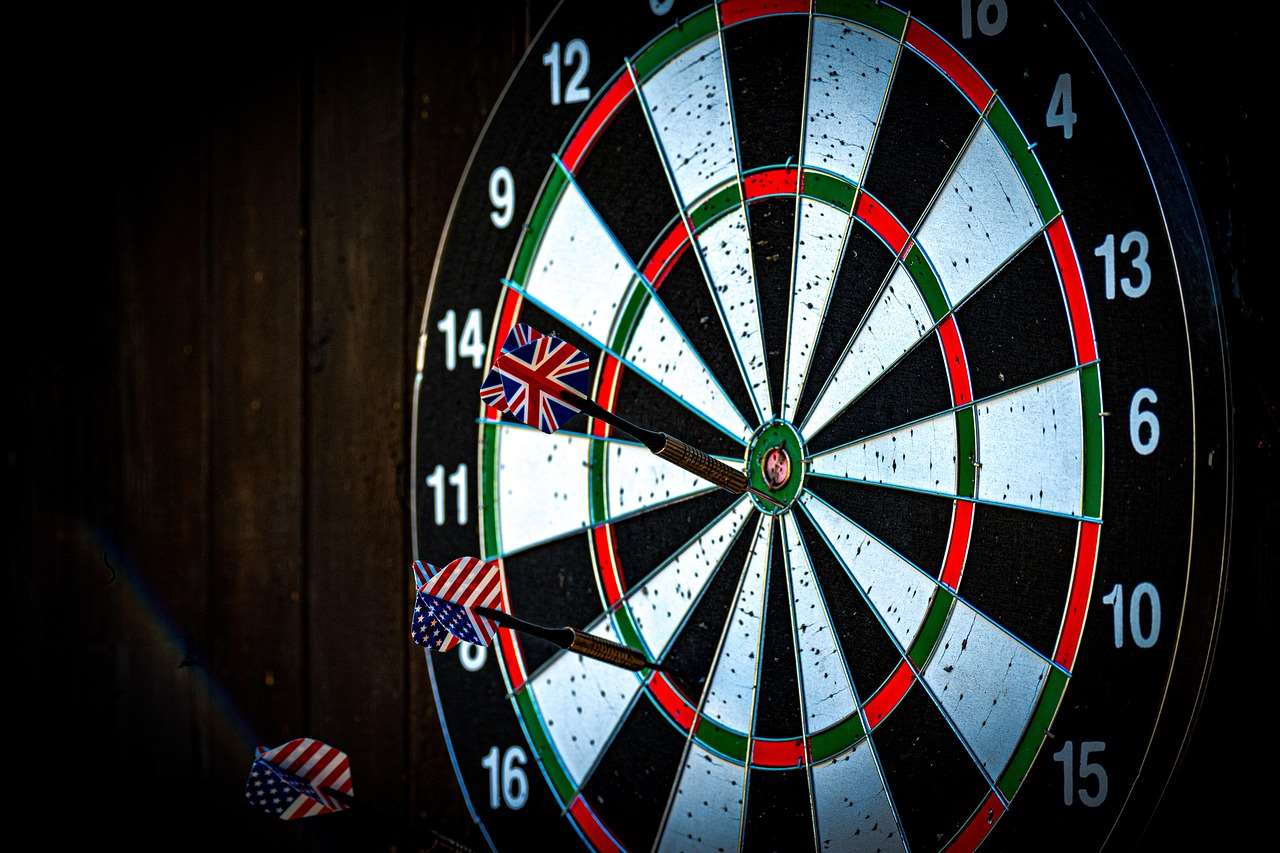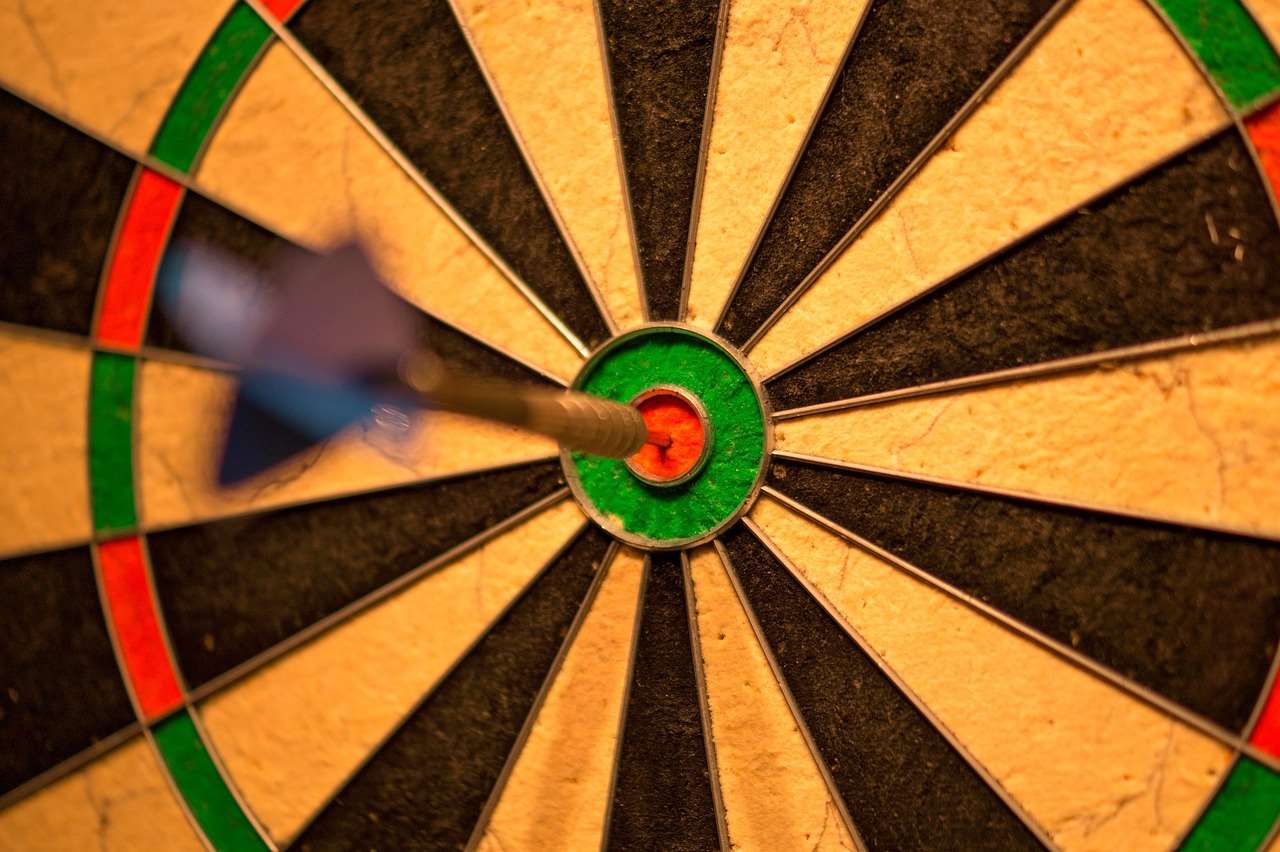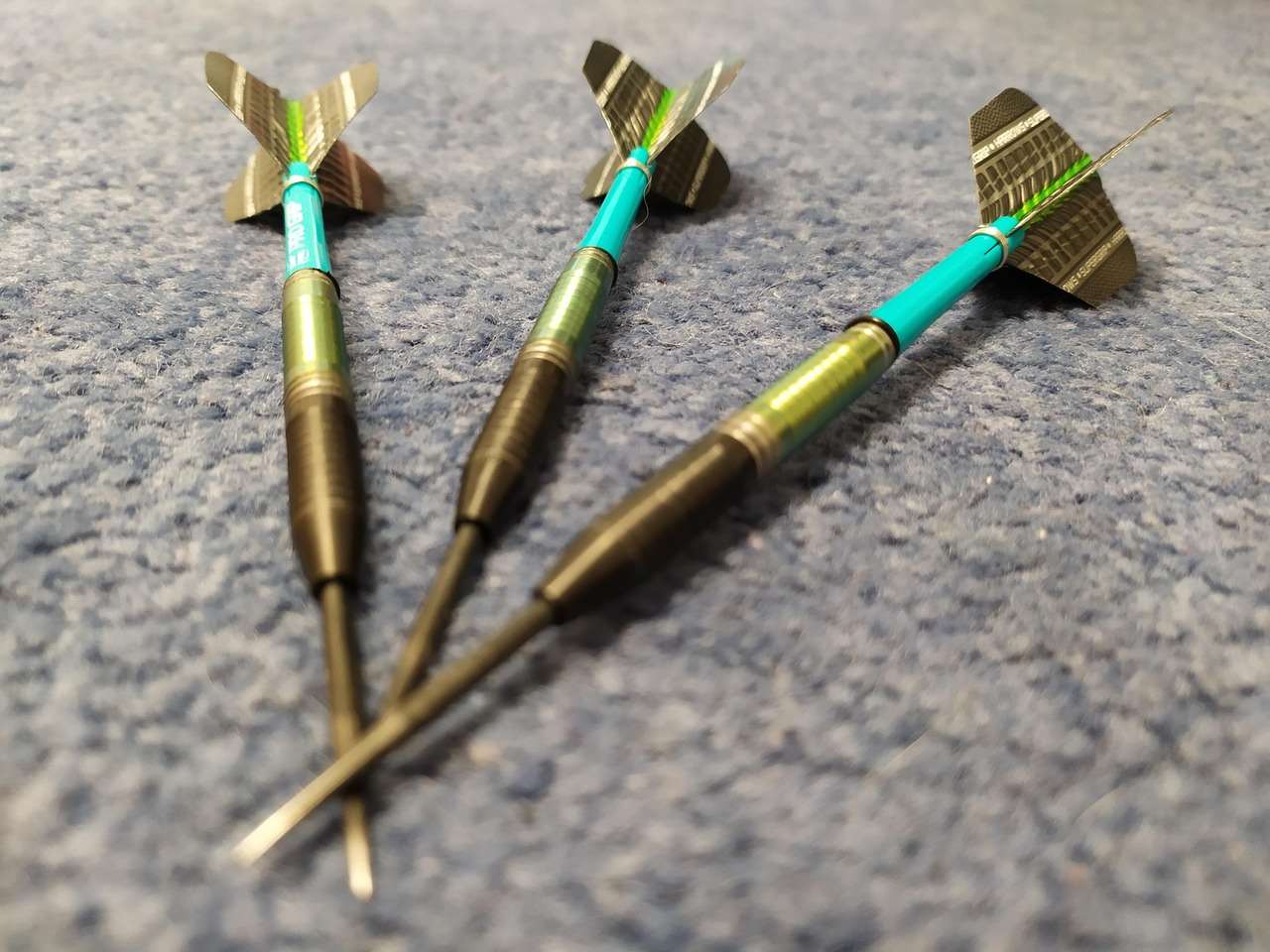Understanding **dartboard points** is crucial for playing darts, whether you’re a beginner or aiming for professional status; essentially, it’s how you keep score and ultimately win the game. This article dives deep into the specifics of **dartboard points**, covering everything from the basics of the scoring system to advanced strategies for maximizing your score. We’ll explore the different sections of the dartboard, common scoring mistakes, and tips to improve your accuracy and overall game.
⚠️ Still Using Pen & Paper (or a Chalkboard)?! ⚠️
Step into the future! The Dart Counter App handles all the scoring, suggests checkouts, and tracks your stats automatically. It's easier than you think!
Try the Smart Dart Counter App FREE!Ready for an upgrade? Click above!
Understanding the Dartboard Scoring System
The standard dartboard is divided into 20 numbered sections, each radiating from the center. These sections are separated by wires, and each section is further subdivided to create different scoring opportunities. To master the game, you need to understand how each area affects your **dartboard points**.

Here’s a breakdown of the key scoring areas:
- Single Numbers: These are the large sections between the wires. If you hit the number 10, you score 10 points.
- Double Ring (Outer Ring): Hitting a section in the double ring doubles the value of that section. For example, hitting the double 20 scores 40 points. Mastering the doubles is essential for finishing legs of dart board playing.
- Treble Ring (Middle Ring): Hitting a section in the treble ring triples the value of that section. Hitting the treble 20 scores 60 points, the highest possible score from a single dart.
- Bullseye: The bullseye is the center of the dartboard. The outer green ring is worth 25 points (Single Bull), and the inner red circle is worth 50 points (Double Bull or Bull).
- The Oche: This is the throwing line, 7 feet 9 and a quarter inches from the face of the dartboard. Players must throw from behind this line.
Calculating Dartboard Points: The Basics
Calculating **dartboard points** is straightforward once you understand the scoring system. Here’s a basic example:
Let’s say you throw three darts and hit the following:
- Dart 1: Single 20 (20 points)
- Dart 2: Treble 20 (60 points)
- Dart 3: Single 5 (5 points)
Your total score for that turn would be 20 + 60 + 5 = 85 points.
In a standard game of 501, you start with 501 points and subtract your score from each turn until you reach zero. The goal is to reach zero exactly, finishing with a double or the bullseye. This is often referred to as checking out or hitting the ‘double to win’. Many players use a Best darts scoring app to quickly keep track of their progress.
Advanced Dartboard Points Strategies
Once you’ve mastered the basics of calculating **dartboard points**, you can start exploring more advanced strategies to improve your game. One key strategy is aiming for high-scoring areas like the treble 20, but consistency and strategic play are equally important.

Here are some advanced tips:
- Prioritize High Scores: Aim for the treble 20 (60 points) whenever possible. This will quickly reduce your score in a 501 game.
- Understand Checkouts: Knowing your checkout combinations is crucial for finishing the game. Practice common checkouts like 40 (double 20), 32 (double 16), and 50 (bullseye).
- Strategic Play: If you miss the treble 20, consider aiming for the single 20 or the single 1 to set up your next throw.
- Know Your Averages: Understanding your scoring average helps you predict your performance and adjust your strategy accordingly.
- The Dart hardstyle walk on: is also a great way to get motivated.
Common Scoring Mistakes and How to Avoid Them
Even experienced players can make mistakes when calculating **dartboard points**. Here are some common errors and how to avoid them:
- Misreading the Dartboard: Double-check the number you think you hit, especially in the heat of competition. A quick glance can lead to miscalculations.
- Incorrect Addition: Always double-check your math, especially when calculating scores in your head. Use a dart score app or a notepad to avoid errors.
- Busting: “Busting” occurs when you reduce your score below zero or to one. This results in the loss of all three darts for that turn and returning to your score at the beginning of the turn. Busting is a common mistake when attempting checkouts, so plan your throws carefully.
- Not Finishing on a Double: Remember, you must finish on a double or the bullseye in a standard game of 501. Missing the double means your score remains unchanged from the beginning of your turn.
- Dartboard jpeg resources are available online, but understanding the board is always best.

Tips for Improving Your Dartboard Points Average
Improving your **dartboard points** average requires practice, focus, and a strategic approach. It’s not just about throwing darts; it’s about refining your technique and developing a consistent rhythm.
- Practice Regularly: The more you practice, the more consistent your throws will become. Aim for at least 30 minutes of practice each day.
- Focus on Accuracy: Don’t just throw darts aimlessly. Focus on hitting your target with each throw.
- Develop a Consistent Stance and Throw: A consistent stance and throw will help you maintain accuracy. Find a stance that feels comfortable and practice your throw until it becomes second nature.
- Warm Up Properly: Before starting a game, take a few minutes to warm up your arm and shoulder muscles.
- Analyze Your Performance: Keep track of your scores and identify areas where you can improve. Consider using a dart interface or a score app to track your progress.
Choosing the Right Darts and Dartboard
The equipment you use can significantly impact your **dartboard points**. Choosing the right darts and dartboard is crucial for optimizing your performance. Consider these factors:
- Dart Weight: Darts come in various weights, typically ranging from 20 to 26 grams. Experiment to find the weight that feels most comfortable for you.
- Dart Material: Darts are usually made from brass, nickel silver, or tungsten. Tungsten darts are more expensive but offer a slimmer profile and better grip. Consider how long does a set of darts last when making your decision.
- Dart Shafts and Flights: Experiment with different shaft lengths and flight shapes to find the combination that provides the best stability and accuracy for your throw.
- Dartboard Quality: Invest in a high-quality sisal dartboard. Sisal dartboards are self-healing, meaning the holes close up after the darts are removed. A good dartboard will last longer and provide a better playing surface.
- Dartboard Mounting: Ensure your dartboard is mounted at the correct height (5 feet 8 inches to the center of the bullseye) and distance from the throwing line (7 feet 9 and a quarter inches).

The Mental Game of Darts
While technique and practice are essential, the mental aspect of darts is just as crucial for maximizing your **dartboard points**. Staying focused, managing pressure, and maintaining a positive attitude can significantly impact your performance.
- Stay Focused: Eliminate distractions and concentrate on your target. Visualize your dart hitting the desired spot.
- Manage Pressure: Darts can be a high-pressure game, especially in competitive situations. Learn to manage your nerves and stay calm under pressure.
- Maintain a Positive Attitude: Don’t get discouraged by missed throws. Maintain a positive attitude and focus on your next throw.
- Develop a Routine: Establish a pre-throw routine to help you stay focused and consistent.
- Learn from Your Mistakes: Analyze your performance and identify areas where you can improve.
Dartboard Points in Different Game Variations
While 501 is the most common darts game, other variations exist, each with its unique scoring rules and strategies. Understanding these variations can add depth and excitement to your darts experience and challenge your understanding of **dartboard points**.
Around the Clock
In this game, players must hit each number on the dartboard in sequential order, starting from 1 and progressing to 20. The first player to hit all numbers wins. Variations include requiring players to hit doubles or trebles on each number, increasing the difficulty.
Cricket
Cricket involves scoring on specific numbers (usually 20, 19, 18, 17, 16, 15, and the bullseye). A player must “close” a number by hitting it three times before they can score on it. Once a number is closed by both players, it’s removed from the game. The player with the highest score on the open numbers at the end of the game wins, provided they have closed all the required numbers.
Shanghai
The goal in Shanghai is to score the most points in seven rounds. Each round focuses on a specific number, starting with 1 and increasing to 7. Players aim to hit the single, double, and treble of that number in each round. Hitting all three in a single round (a “Shanghai”) instantly wins the game. 
Following the Pros: Inspiration for Your Dartboard Points Journey
Watching professional darts players can provide valuable insights into advanced techniques, strategies, and the mental fortitude required to excel in the sport. Keep an eye on events like the darts connect pdc. Observing how professionals maximize their **dartboard points** can inspire you to improve your own game.
By paying attention to their routines, throwing techniques, and decision-making under pressure, you can glean valuable lessons that you can apply to your own practice and gameplay. Additionally, following professional darts tournaments and leagues can keep you informed about the latest trends and developments in the sport.
Conclusion
Mastering **dartboard points** is the cornerstone of any successful darts player, whether you’re playing casually or competitively. By understanding the scoring system, practicing consistently, and developing a strategic approach, you can improve your accuracy and maximize your score. Remember to avoid common scoring mistakes, choose the right equipment, and cultivate a strong mental game. Put these tips into practice, and you’ll be well on your way to becoming a more skilled and confident darts player. Why not start practicing today, using the information outlined here?
Hi, I’m Dieter, and I created Dartcounter (Dartcounterapp.com). My motivation wasn’t being a darts expert – quite the opposite! When I first started playing, I loved the game but found keeping accurate scores and tracking stats difficult and distracting.
I figured I couldn’t be the only one struggling with this. So, I decided to build a solution: an easy-to-use application that everyone, no matter their experience level, could use to manage scoring effortlessly.
My goal for Dartcounter was simple: let the app handle the numbers – the scoring, the averages, the stats, even checkout suggestions – so players could focus purely on their throw and enjoying the game. It began as a way to solve my own beginner’s problem, and I’m thrilled it has grown into a helpful tool for the wider darts community.